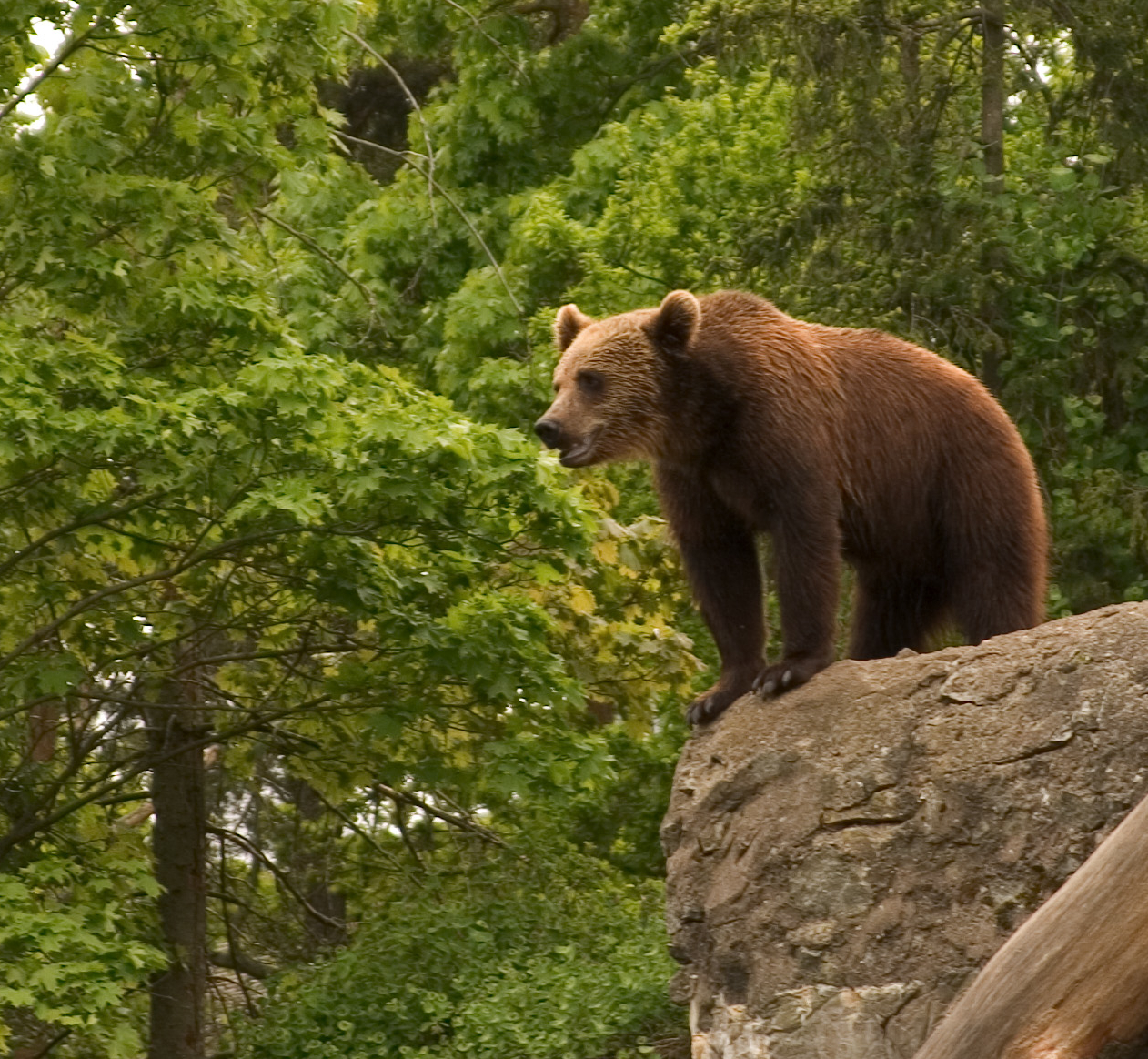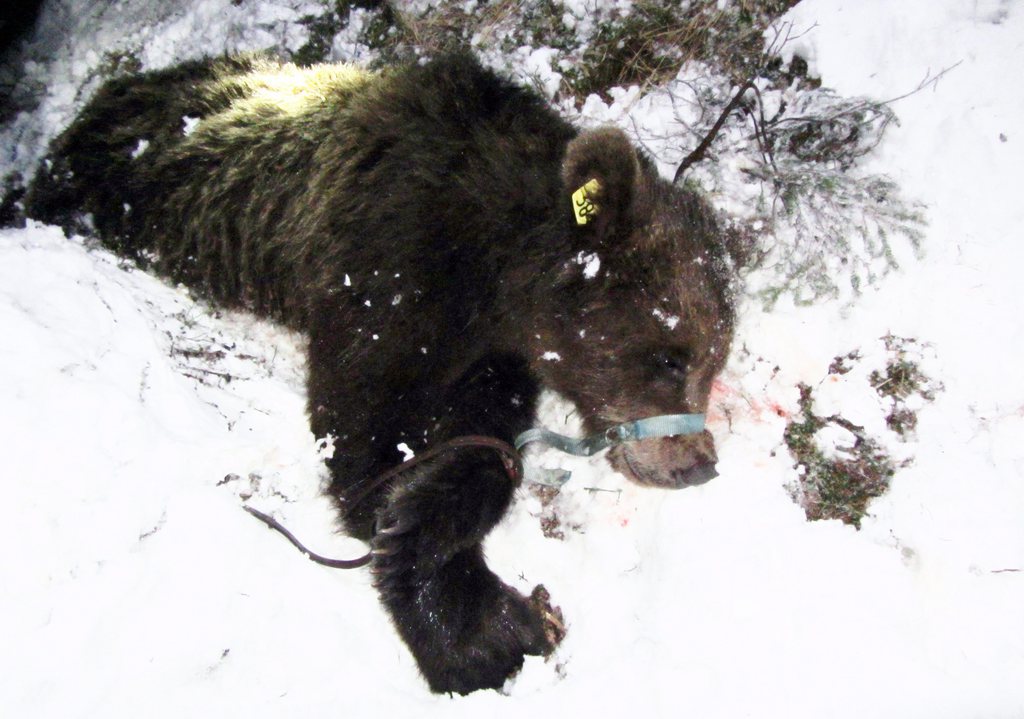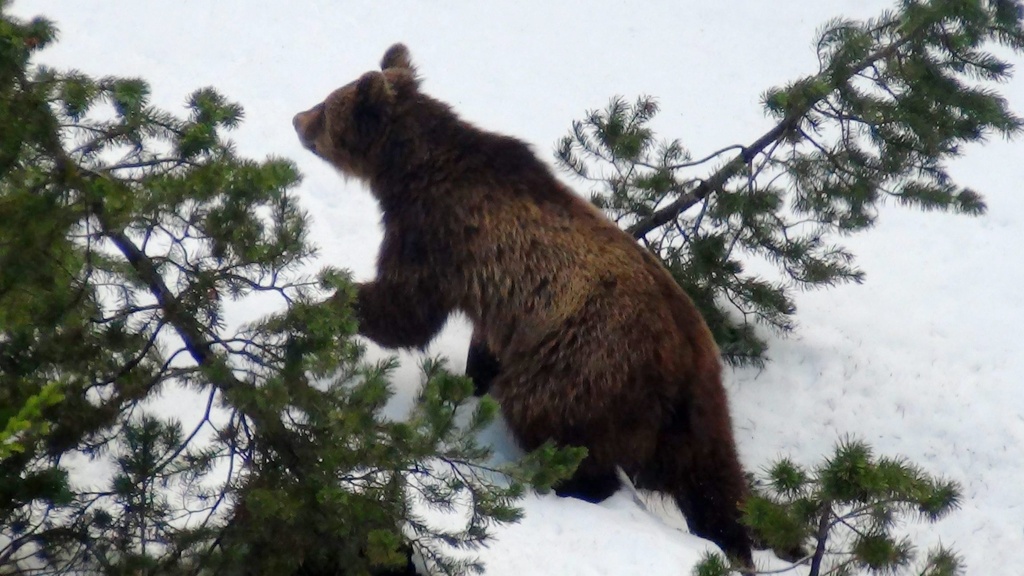Switzerland’s only wild bear is shot

The notorious brown bear known as M13 has been killed. He was shot in the early hours of Tuesday, after it proved impossible to keep him away from human settlements, the Federal Office for the Environment announced on Wednesday.
M13 was the only bear known to have been living in Switzerland.
“Both in the autumn and now after waking from his winter sleep, the bear kept looking for food in villages, had followed people in broad daylight and – despite repeated measures to scare him off – showed absolutely no fear of humans,” said a statement from the office.
“He was classified as a risk to human safety. Under Switzerland’s ‘bear plan’ it became inevitable that he would be shot.”
M13 apparently woke up from his winter sleep about ten days ago. At the weekend he followed two hikers into a village in Val Poschiavo in the south eastern canton of Graubünden, then walked along the village street to the main road. A driver told the German-language tabloid Blick that if he hadn’t braked he would have run the animal over.
“When the bear stood in front of our car he bared his teeth and growled,” he said.
The bear had been fitted with a transmitter in October 2011, which he lost when hit by a train in spring 2012. Another transmitter was fitted in June 2012, and he had been kept under close watch.
In the past, the three-year old bear had roamed between Switzerland, Italy and Austria, but had been seen frequently in Val Poschiavo towards the end of 2012.
Last October he had entered several residential areas, and in November even broke into a holiday home and eaten food stored there. His behaviour led the environment office to classify him as a “problem bear”.
According to authorities in Graubünden, local officials had tried numerous times to ward off M13 with rubber bullets and other non-deadly measures to encourage him to turn away from populated areas. However, they believe he formed curious habits early on that could not be broken, as demonstrated by his run-in with a train and by his numerous sightings near towns and villages.

More
Bear M13 is on the prowl again
Conflicting opinions
The killing of M13 was not a surprise. The local online newspaper for the Poschiavo region, Il Grigione Italiano, reporting on his escapades at the weekend, headed its article: ‘Are we just waiting for a tragedy?’ and called for the bear to be shot.
The Graubünden cantonal hunting office had said on Monday that discussions were underway between the canton and the federal authorities about the bear’s behaviour and confirmed to swissinfo.ch that M13 had definitely been a problem bear for the office.
However, the local council in Poschiavo had merely called for the bear to be removed to a less populated region, such as one of the neighbouring national parks, the website of Romansch radio and television reported on Tuesday.
The WWF issued a statement saying that it was “deeply disappointed” by the fact that the bear had been killed.
“It is clear that the shooting came too soon – it would have been much better to have stepped up and continued with the deterrent measures,” said Joanna Schönenberger, bear expert at the nature protection organisation.
The organisation Swiss Animal Protection also condemned the killing, describing it as “the easy way out”.
“Everything points to the fact that the authorities did not apply the Swiss bear plan consistently in Poschiavo,” it said in a statement.
Initial feedback on Swiss newspaper websites was overwhelmingly hostile to the shooting.
More bears expected
At a press conference following the bear’s shooting, Graubünden authorities and the environment ministry said they expect more animals from the bear population of about 40 located near Trentino, Italy will enter Switzerland in the future. M13 was part of the Trentino bear population.
In order to prevent future Swiss bears from suffering M13’s fate, authorities expressed the need for preventative measures in areas frequented by bears, like electric fences around beehives and more protection for animal herds.
In addition, residents of bear-prone communities must secure their garbage containers and adjust the way they dispose of organic materials so as not to attract animals to the area.
Bears were once relatively widespread in Switzerland, but the last one was shot in Graubünden in 1904.
In 1999-2002 ten bears from Slovenia were released in an Italian national park. They include the parents of most of the bears that have subsequently wandered into Switzerland.
The first bear, known as JJ2, returned in 2005, and was sighted in canton Graubünden over the space of a few months, but he later disappeared and it is not known what happened to him.
Switzerland brought a “bear plan” into force in July 2006 to promote coexistence between humans and bears. It provides for bears to be killed if they are classified as posing a risk to humans, notably by frequenting human settlements and ignoring attempts to deter them.
In 2007 two bears, JJ3 and MJ4, were tracked in Graubünden.
In August 2007 JJ3 started showing signs that he was not afraid of humans. His behaviour led to him being killed in March 2008.
In 2010 a bear killed some sheep in the Engadine; the next year a bear – possibly the same animal – killed more sheep in Graubünden.
M13 was first seen in the Engadine in April 2012. On several occasions he was seen near houses. He was fitted with a transmitter, which showed him wandering between Switzerland, Italy and Austria.
In April his brother, M14, was killed by a car in Italy. Another brother M12 died the same way in June.
In April M13 was hit by a train in Graubünden.
Towards the end of 2012 M13 appeared in the Val Poschiavo, where he killed a donkey, destroyed beehives, and broke into a holiday home.
After waking up in February 2013 he continued to show total lack of fear of humans. He was classified as posing a safety risk and shot on February 19.

In compliance with the JTI standards
More: SWI swissinfo.ch certified by the Journalism Trust Initiative









You can find an overview of ongoing debates with our journalists here . Please join us!
If you want to start a conversation about a topic raised in this article or want to report factual errors, email us at english@swissinfo.ch.